Witches Oak Raw Water Pumping Station (2024)
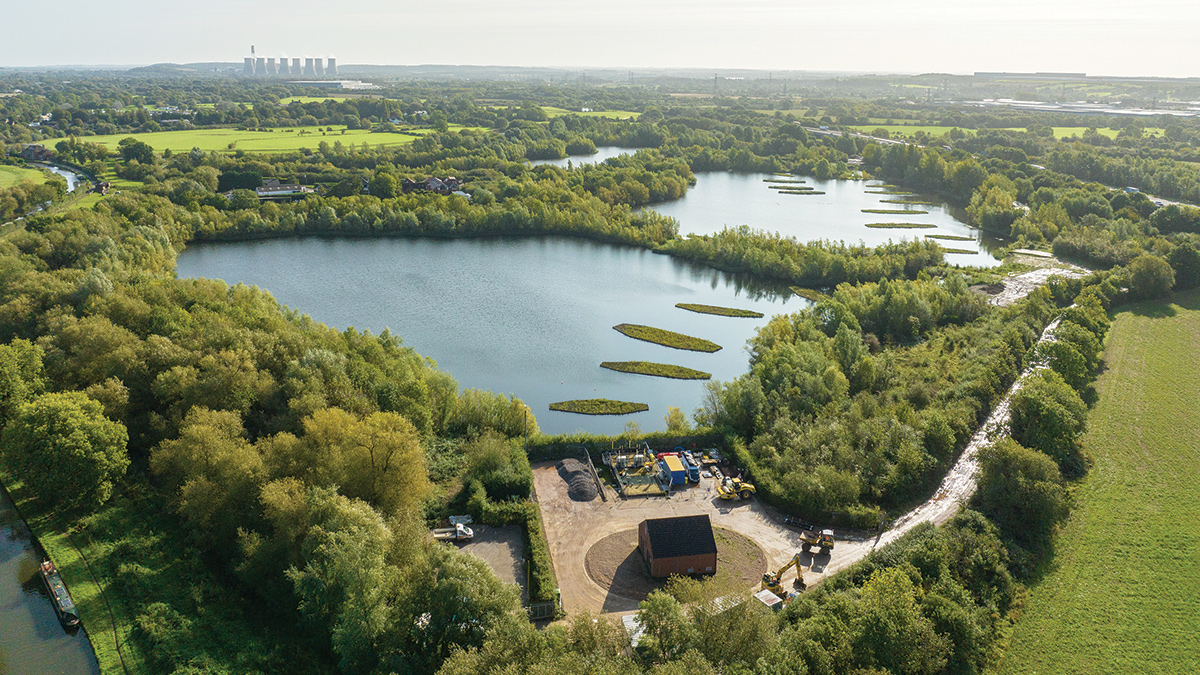
Biomatrix floating wetlands at Witches Oak Water (autumn 2023) - Courtesy of Sky Revolution
Witches Oak Water is a series of gravel pit lakes south-east of Derby, on the River Trent. The 80 ha site, part of a larger sand and gravel quarry, was acquired by Severn Trent more than 20 years ago to store water as part of a drought resilience project. Severn Trent constructed an intake, pumping station and pipeline to the nearby Church Wilne WTW. Water quality was poor and required more treatment to meet drinking water standards than was originally anticipated, so abstraction ceased and the site mothballed until a solution could be found. Severn Trent is now bringing Witches Oak Water back into operation by recommissioning the existing infrastructure and increasing raw water supplies to a maximum of 93 MLD. The additional water will improve Severn Trent’s resilience to hot and dry summers and secure water resources for future generations.
Solution
Severn Trent is keen to explore the potential of low-carbon, natural, biological water treatment processes in conjunction with conventional, chemical treatment to remove pollutants from the water abstracted from the River Trent. Historic data revealed that nitrate levels in the River Trent have occasionally exceeded the 50 Mg/l concentration value prescribed by the DWI, and regularly breached Seven Trent’s own, more stringent standard.
As a result, a natural, biological solution in the form of floating wetlands to provide preliminary water treatment is being combined with refurbishing the existing abstraction infrastructure at the lakes (called the Raw Project) to supply water to the new water treatment works being constructed in Church Wilne.
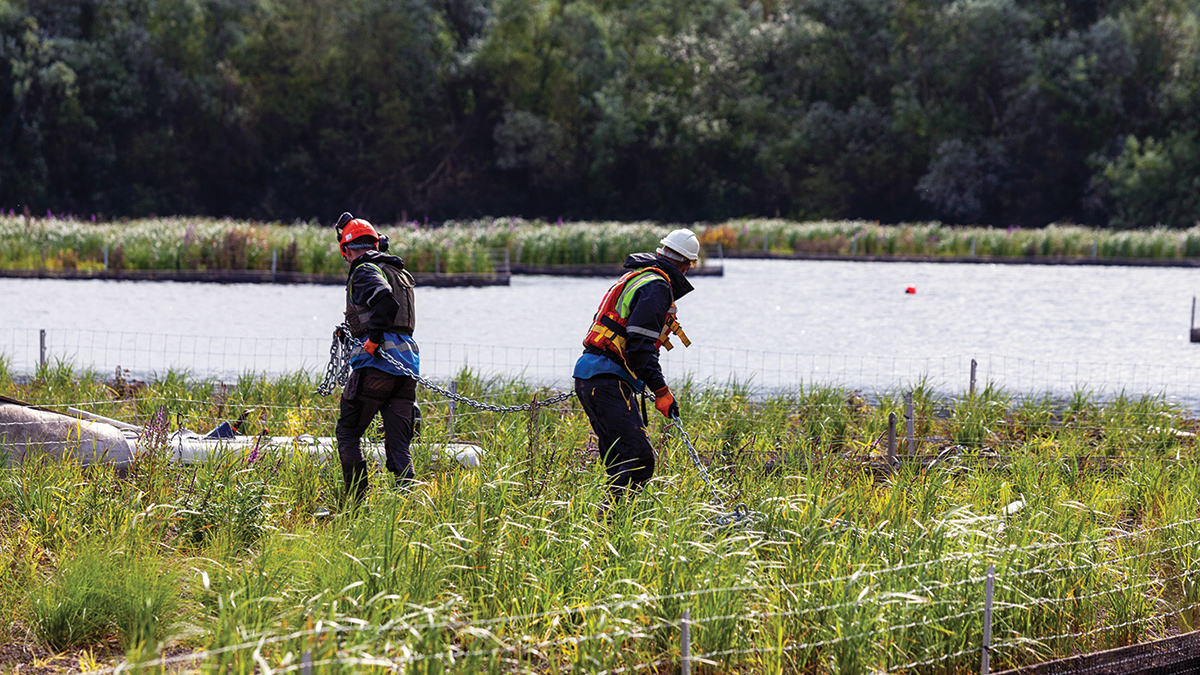
Installing the floating wetlands – Courtesy of Matthew Nichol Photography
Floating wetlands
This is the first time in the UK that wetlands have been used for operational water pre-treatment on this scale and in the ‘real world’, but theoretical studies show that, on average, these floating wetlands could remove in the region of 40-60% of both total nitrogen (ammonia, organic and oxidised nitrogen) and total suspended solids (particles >2 microns), helping to considerably reduce the amount of energy and chemicals used in the traditional water treatment process.
Floating wetlands were selected over conventional or static wetlands because Witches Oak floods regularly during the winter.
The pontoons can rise and fall with the water level, so are resilient to changes in load and seasonal fluctuations, whereas a static wetland would be submerged during a flood event, diminishing process benefits provided by the vegetation. This has been thoroughly tested in winter 2023/24 when the site experienced extensive 1 in 100-year flood events. The floating solution also typically requires less maintenance, including no watering or fertilisation.
The Biomatrix floating ecosystems selected for Witches Oak mimic elements of self-sustaining, naturally occurring riparian wetlands. Water quality is improved by the root mass, which provides a large surface area for the microbial communities needed to remove pollutants. Planted with several types of sedge, hard rush and flowering species, including purple loosestrife and meadow sweet, these islands provide biological treatment to reduce the turbidity and nitrates in the raw water.
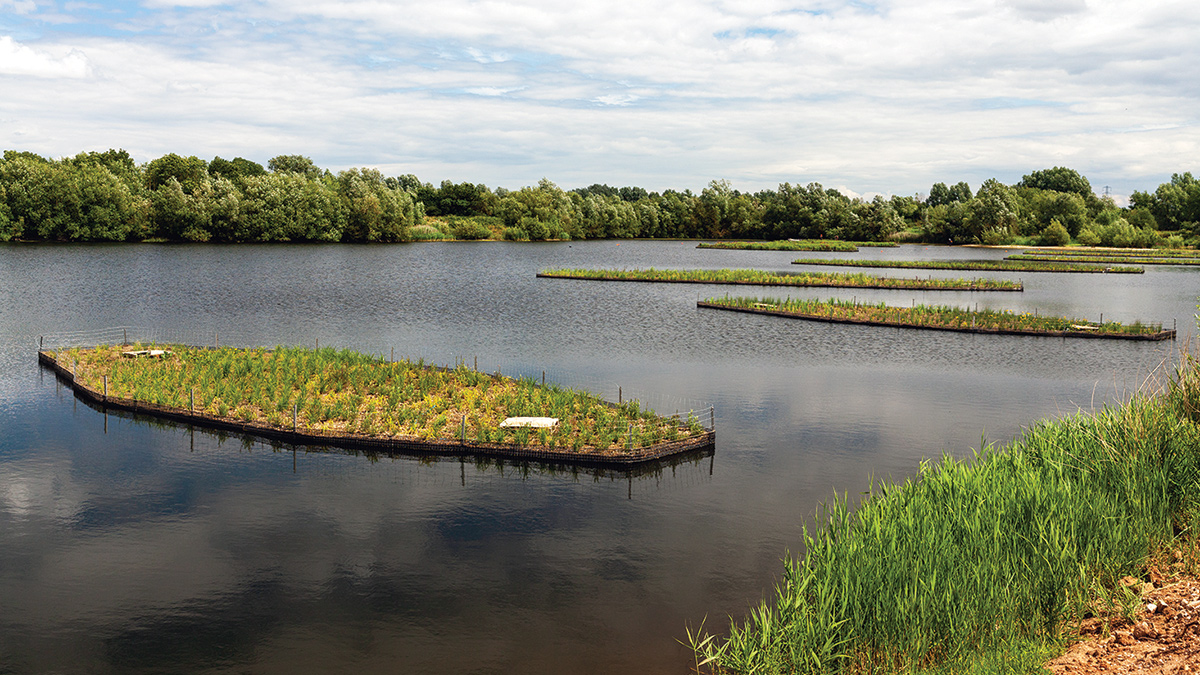
Floating wetlands (2023) – Courtesy of Matthew Nichol Photography
In December 2022, Mott MacDonald Bentley initially focused on the construction and launch of three trial wetlands in Lake 2, as well as the removal of a redundant man-made wetland from the lake. Since then, a further 28 floating wetlands have been installed on the three northern most lakes during summer 2023.
The 31 floating treatment wetlands were positioned in the natural water flow path in Lakes 1, 2 and 3.
Work is also being undertaken to upgrade of the existing pumping station and river intake, along with the installation of a new fish recovery system and three new transfer pumps.
Undertakings
This is a true ‘One Mott MacDonald’ project with members of the consultancy teams having worked on the feasibility of the wetlands’ abilities to pre-treat water and then their outline design, before handing over to colleagues at Mott MacDonald Bentley through early contractor involvement and then design and build delivering the detailed design, pre-construction and construction activities.
Witches Oak RWPS: Supply chain – key participants
- Client: Severn Trent
- Principal designer & contractor: Mott MacDonald Bentley
- Outline design & specialist input: Mott MacDonald
- Floating wetlands: Biomatrix Water
- Civils installation: Aquatic Engineering Ltd
- Fish recovery: MEM Fisheries Consultants & Services Ltd
- Cofferdam: MGF Ltd
- Piling: Elite Sheet Piling Ltd
- Formwork: Doka UK Formwork Technologies Ltd
- Steelfixers: MTN Structures Ltd
- Electrical: Main Electrical Ltd
- Electrical: BGEN Ltd
- Dewatering: Selwood
- Dewatering: Alba Dewatering Services Ltd
- Pumps: Xylem Water Solutions
- Fish & eel screens: Intralox LLC
- Pipework supply: Freeflow Pipesystems
- Pipework Installation: Utiliqo Ltd
- Valves: AVK UK Ltd
- Flow controls: AFFCO Flow Control (UK) Ltd
- Penstocks: Waterfront Fluid Controls
- Kiosk: Morgan Marine Ltd
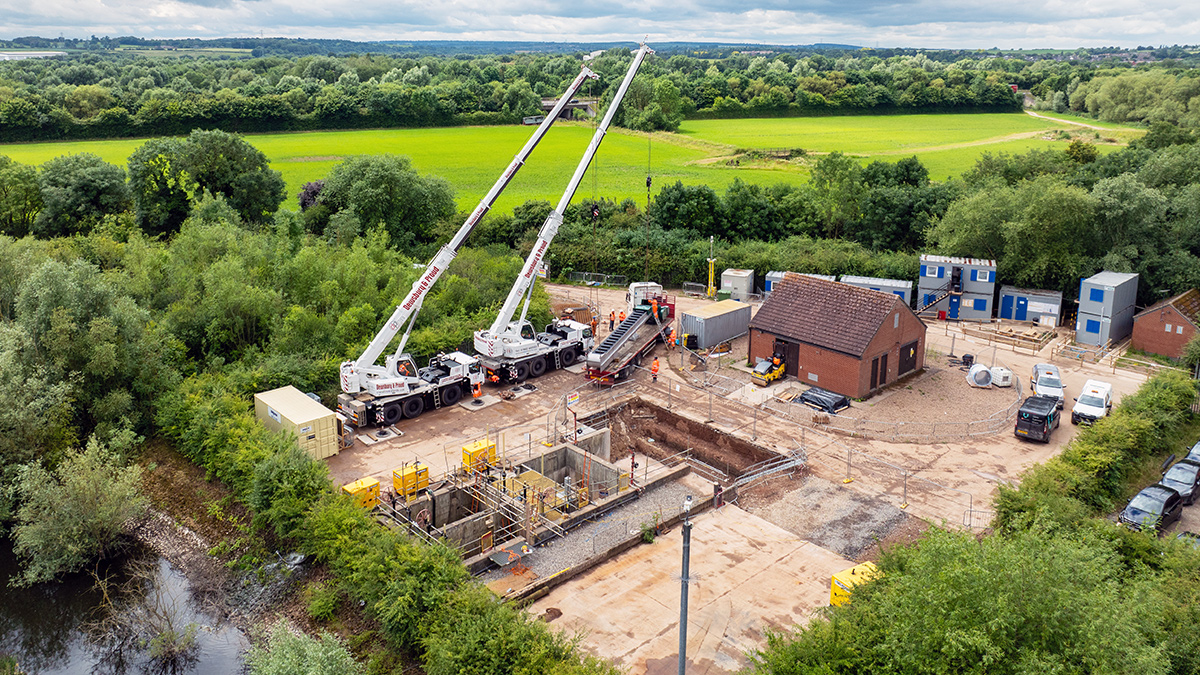
Pumping station refurbishment – Courtesy of Sky Revolution
Environmental measures
To minimise the environmental impact, temporary track mats were used for the base of the works’ compound and launch area at Lake 2, allowing the site to return to managed grassland when the mats were lifted.
A silt curtain was erected in the lake to prevent debris from the old wetland polluting the water. This was important because the wetland was colonised by invasive species, mostly Himalayan balsam on land and zebra mussels below water. The curtain also ensured that sediment disturbed by the removal work did not spread.
The design has also had to accommodate regular site flooding; in particular for the temporary works around the river intake where, as an example, the cofferdam was designed specifically to account for controlled and safe flooding of the excavation to manage the high river levels experienced on-site.
Programme
Launching and anchoring the 31 floating wetlands was the first phase of the Raw Project. Phase two is refurbishing the abstraction pumping station built in the 1990s to enable raw water to be supplied to Witches Oak WTW.
Located on the western shore of Lake 3, the pumping station is undergoing a complete refurbishment, including the installation of three new transfer pumps to deliver up to 96 Ml/d of pre-treated water; enough for a city the size of Derby.
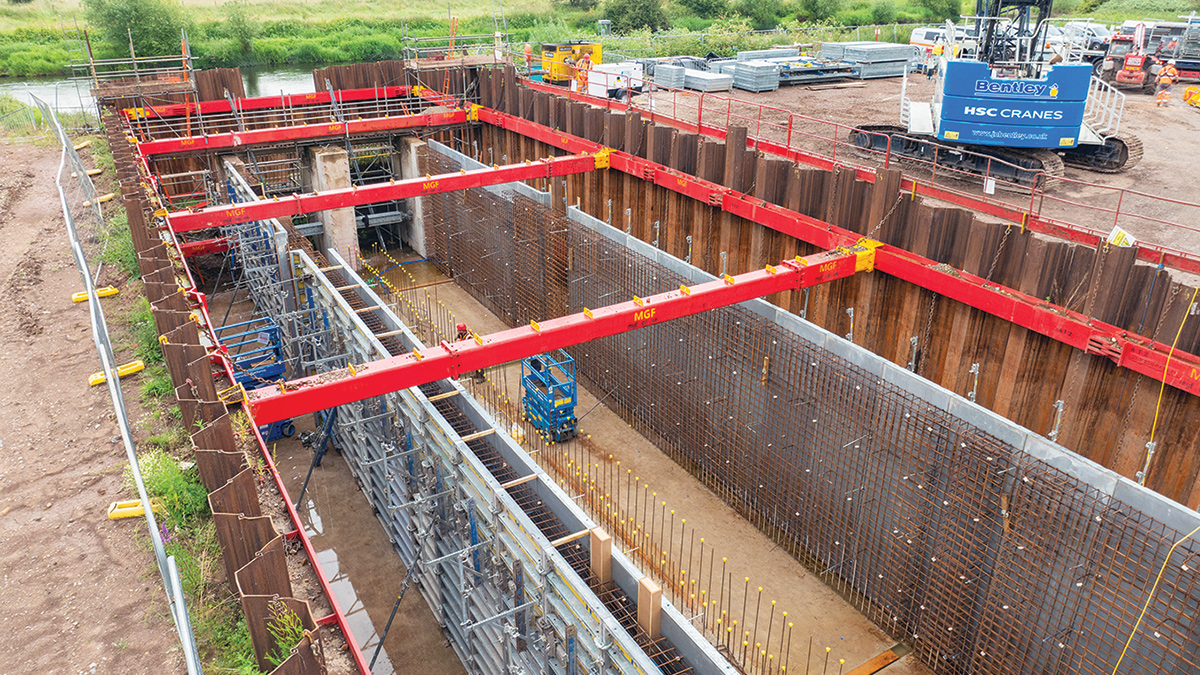
River intake – Courtesy of Sky Revolution
The design layout for the station also includes a new water quality kiosk and a wash-water booster set to clean the fish screens.
The river intake in the north-east corner of Lake 1 is also more than 25 years old and is being modified. The design will help to protect both fish and the gravel lakes. Two new 2.5m x 4m concrete channels will be constructed to create a flow low enough to allow fish and eels to swim back to the river, while two large, actuated intake penstocks will be installed to protect the lakes if there is a river pollution incident.
The introduction of new recirculation pipework will enable water to be pumped back to the river from the pumping station when necessary. Under the proposals, river water quality will in future be monitored upstream of the intake as well as at the intake itself.
Barbel, bream, chub and roach are common fish species found in the River Trent and two new screens will be fitted to filter fish and debris out of the water drawn in by the pumps at Witches Oak Water. The fish recovery system will consist of an above-ground pipe connecting the pumping station intake culverts to Aston Brook, which runs alongside the river, and from where fish can eventually return to the Trent.
Summary
Witches Oak is one of seven projects that form Severn Trent’s Green Recovery Programme, worth more than £700m, which aims to develop low-carbon water resources, improve river water quality, replace redundant lead pipes, install smart metering and make urban areas more resilient.
The additional water supply from Witches Oak will help meet demand for water from a growing population and improve the resilience of supplies during hotter, drier summers.
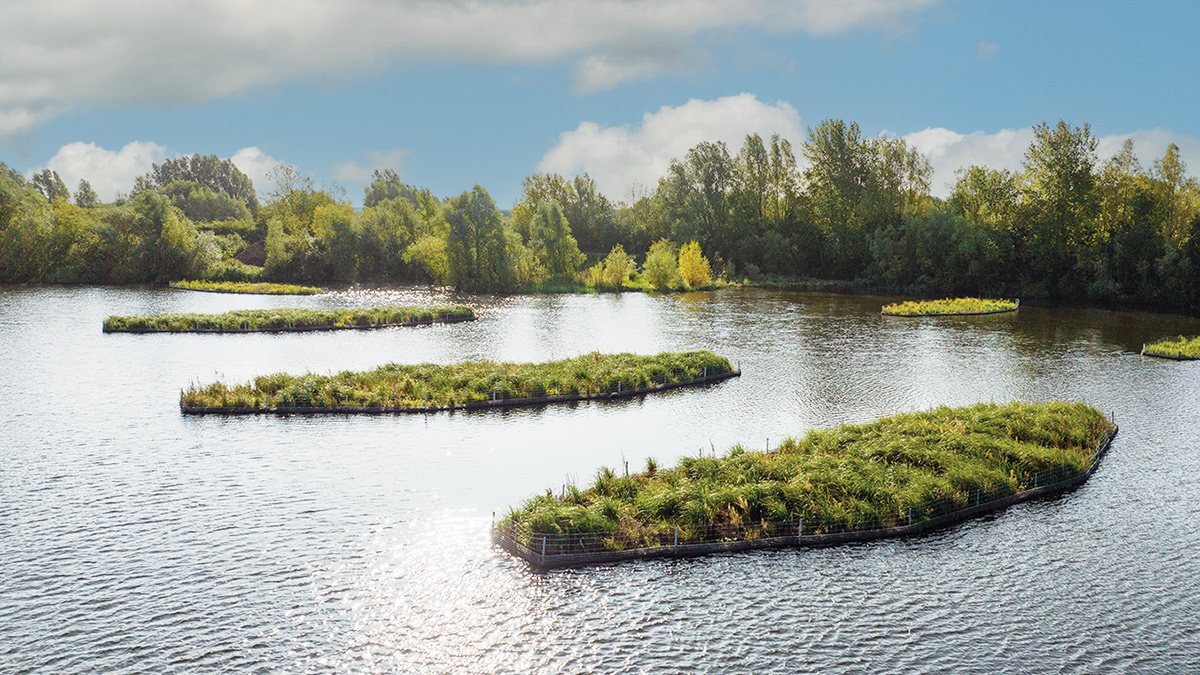
Installed wetlands – Courtesy of Sky Revolution
The 31 constructed wetlands use naturally occurring biological processes to contain and treat ammonia, suspended solids and trace metals. Coupled with installing ceramic membranes at Witches Oak WTW (to provide a filtration barrier, reduce turbidity and remove pathogens such as cryptosporidium), the project is a more carbon-friendly treatment solution.
By restoring natural functions to these gravel lake ecosystems, the project is promoting biodiversity recovery and contributing to enhanced ecosystem services. The wetlands provide amazing biodiversity benefits including:
- Above the water, the planted vegetation is a haven for wildlife, including nesting birds.
- Below the surface, the floating beds provide habitat for fish, eels and other aquatic species.
- On the fringes of the lake, retained coppiced woodland from the construction activities has been used to create further wildlife habitat.
In addition, positive social outcomes and community engagement are key elements of Severn Trent Water’s 25-year water resources management plan. The delivery team presented to the local girl guide group to tell them about the work we’re doing, and a visitor engagement centre has been installed to showcase this exciting project to local school and community groups.
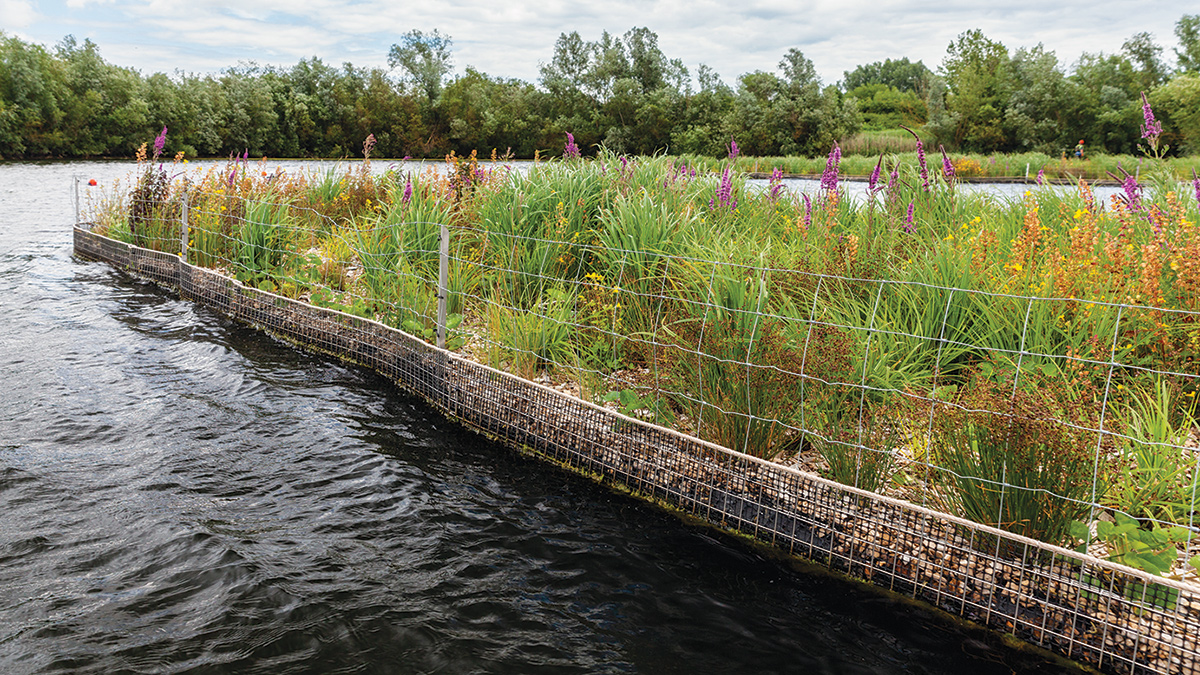
Maturing floating wetland - Courtesy of Matthew Nichol Photography
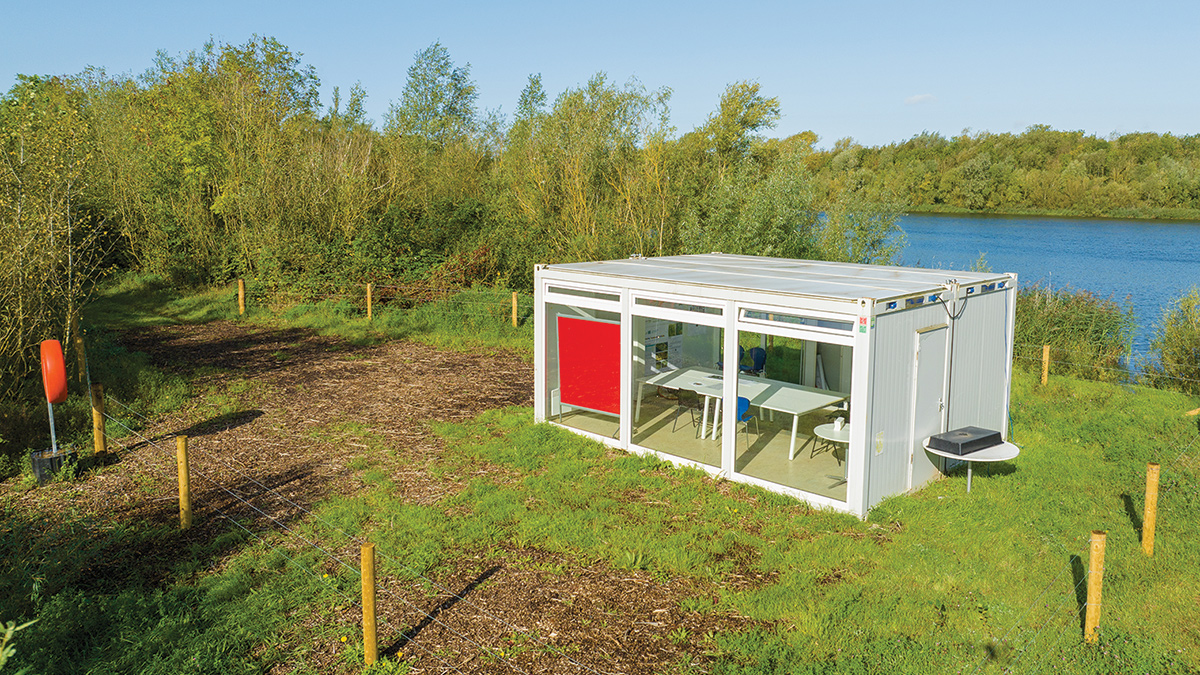
Visitor centre - Courtesy of Sky Revolution








